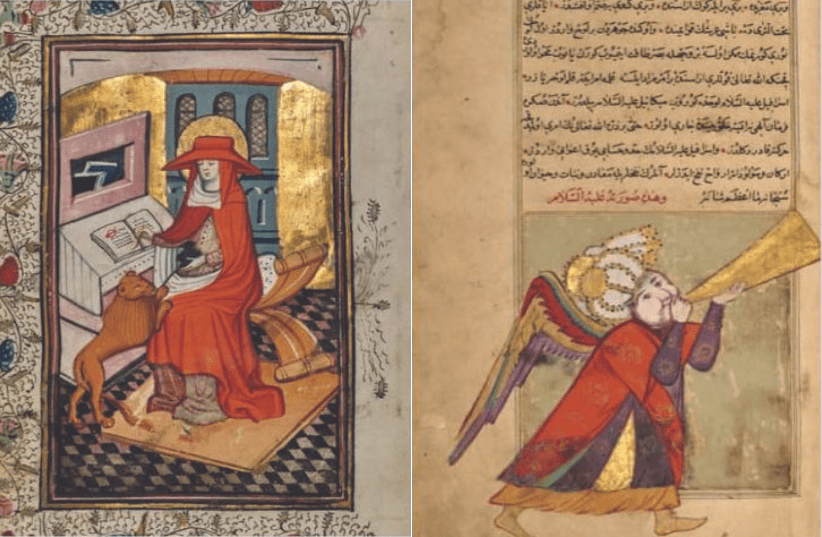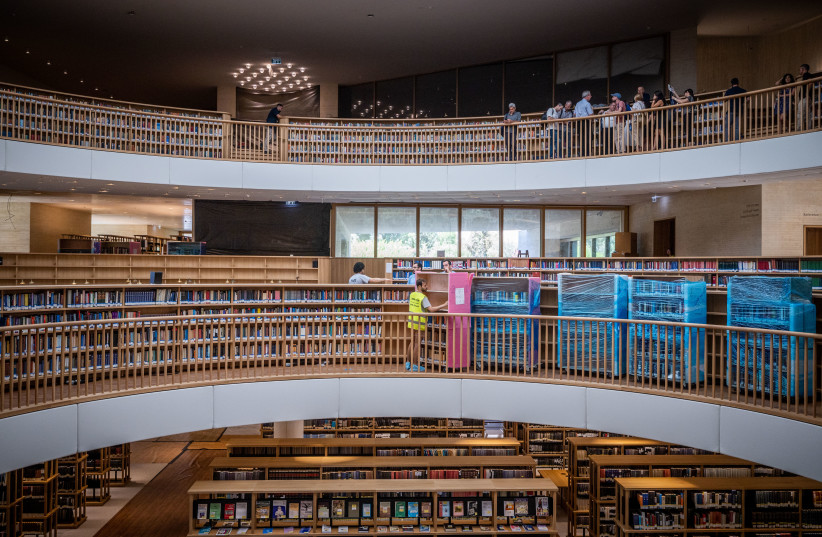The National Library of Israel is 130 years old. It began with the vision of one man, Joseph Chasanowich (1844-1919), a physician from Bialystok, Poland, who dreamed of creating a Jewish national library in Jerusalem. In the delightful coffee table volume 101 Treasures of the National Library of Israel, published in May 2023 to celebrate the opening of the library’s magnificent new premises, we learn that Chasanowich sent 22,000 books to Jerusalem over the years, which were housed in the small Midrash Abarbanel Library, the first public library in Jerusalem.
In 1905, the Zionist Congress became responsible for Midrash Abarbanel and later, in 1925, it merged with the newly established Hebrew University of Jerusalem to become the Jewish National and University Library.
The State of Israel is home to Jews from every possible background, from Yemen to Poland, Brazil to Australia, Russia to the United States, and everywhere in between. At the same time, the state is home to significant Muslim and Christian Arab populations, in addition to Druze, Bedouin, and others. Each community has its own history, language, and religious and ethnic traditions. Most of these communities have saved written texts from the past such as prayers, personal correspondence, records of business transactions, scientific notes, and interpretations of biblical sources. Some of them also saved visual materials. The National Library of Israel in Jerusalem has collected many of these texts and materials in over 1,000 archives and collections.
While the festive opening event planned for when the National Library opened the doors of its beautiful new facility in Jerusalem has been postponed due to the difficult times that we have been undergoing since October 7, the library itself is open for visitors.
A striking collection of books, manuscripts, and more
101 Treasures is a striking and impressive volume illustrated with magnificent photographs. The editors have chosen 101 rare books, manuscripts, archives, and other materials from the library to share with the reader, each one telling a fascinating story.
The library was located on the Hebrew University of Jerusalem’s Mount Scopus campus from 1930-1948, when Mount Scopus was cut off from the rest of Jerusalem after the War of Independence. Its collections were housed in various locations in the city.
In 1960, the collections were reunited in the Lady Davis library building on the Givat Ram campus of the Hebrew University. In the 1990s, as libraries worldwide began to redefine themselves in response to the Internet revolution, the role of the National Library was reevaluated, and a decision was made to separate the library from the university. The planning and building of the new library took years and culminated in the recent opening of the new building.
Reading 101 Treasures from the National Library of Israel is like wandering through a fascinating museum where each exhibit has something exciting and unusual to teach you. The 101 treasures in this book are just a taste of what you will find in the library itself. The book is organized according to themes such as “Community,” “Art and Text,” “Crossing Cultures,” and “Journeys.”
In the “Journeys” section, you will read about the joint archive of botanist Naomi Feinbrun-Dothan (1900-1995) and her colleague Ruth Koppel, the artist who drew the botanical illustrations in her publications. In 1945, Feinbrun-Dothan rode a camel to Egypt to research local flora, one of many expeditions she took in the Land of Israel and the Middle East.
The chapter that follows introduces you to Ezra Aharon Sha’shu’a (1903-95) from Baghdad, who played the oud and composed music. His journey was to the International Congress of Arab Music in Cairo in 1932. In 1935, he moved to Jerusalem, where he documented local musical traditions, performed, and composed. He was involved in the creation of the Palestine Broadcasting Service, which later became Kol Israel. His archive, too, is in the National Library.
You will also read about subjects as diverse as Karaite newspapers in Egypt; a Christian pilgrim’s guide to the Holy Land; and interpretations of Islam written by Ahmad Ibn Taymiyyah in the 14th century, who was put behind bars in Syria without pen and paper so that he would stop writing. Other treasures highlighted include an illuminated manuscript of Maimonides’s Mishneh Torah (Code of Jewish Law), also from the 14th century; a collection of Israeli New Year’s greeting cards from 1902-1960; and a manuscript of the Arhuta Kadishta (Samaritan Pentateuch) from the 13th century. These are just a few examples of what you will find in this remarkable book.
101 Treasures of the National Library of Israel is a meaningful addition to any home library and will most certainly inspire readers to visit the actual National Library. The book is itself a treasure and highly recommended.
- 101 TREASURES FROM THE NATIONAL LIBRARY OF ISRAEL
- By Raquel Ukeles, Hezi Amiur, Yoel Finkelman, Stefan Litt, and Samuel Thrope
- Scala Publishers
- 340 pages; $60

